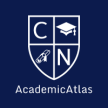Warfarin: From Rat Poison to Life-Saving Marvel
Warfarin: Unlocking the Remarkable Journey from Rat Poison to Life Saver
Introduction
Understanding the historical significance of warfarin
- Warfarin, a commonly used blood thinner, has a fascinating history and has greatly contributed to medical science.
- Blood thinners play a vital role in preventing and treating various medical conditions.
Origins of Warfarin: From Pest Control to Medicinal Marvel
The accidental discovery of warfarin's blood-thinning properties
- Warfarin was first discovered in the 1920s when cows in the northern United States and Canada were mysteriously dying from internal hemorrhages.
- Scientists found that a compound used as a rat poison, which was later named warfarin, was the cause of the bleeding.
Early uses of warfarin as a rat poison and its subsequent medical applications
- Initially, warfarin was primarily used as a rodenticide to control rat populations.
- In the 1950s, researchers discovered warfarin's potential in preventing and treating blood clotting disorders in humans.
How Warfarin Works: Unraveling the Mechanism of Action
Exploring warfarin's impact on the clotting process
- Warfarin works by inhibiting the production of vitamin K-dependent clotting factors in the liver.
- These clotting factors play a crucial role in the formation of blood clots.
Inhibiting vitamin K-dependent clotting factors as the key mechanism
- Vitamin K is vital for the activation and synthesis of several clotting factors.
- Warfarin disrupts the balance by reducing the availability of active vitamin K, resulting in decreased clotting ability.
The delicate balance between preventing excessive clotting and avoiding excessive bleeding
- Finding the right dosage of warfarin for each patient is crucial, as too little can lead to blood clots, while too much can result in uncontrolled bleeding.
- Regular monitoring of a patient's international normalized ratio (INR) values helps maintain the delicate balance.
Warfarin: A Game-Changer in Treating Thromboembolic Disorders
The revolutionary use of warfarin in preventing and managing blood clots
- Warfarin has been a game-changer in the prevention and treatment of thromboembolic disorders, such as deep vein thrombosis (DVT) and pulmonary embolism.
- Its ability to thin the blood and prevent clot formation significantly reduces the risk of serious complications.
Warfarin's critical role in reducing the risk of strokes and deep vein thrombosis
- Strokes and deep vein thrombosis are life-threatening conditions associated with blood clots.
- Warfarin has proven to be highly effective in preventing these conditions by maintaining a proper balance of coagulation factors.
Other thromboembolic disorders where warfarin proves effective
- Warfarin is also used in the treatment and prevention of atrial fibrillation and heart valve replacements, as they carry a high risk of blood clot formation.
Challenges and Concerns Surrounding Warfarin Therapy
Individual differences and genetic factors affecting warfarin dosing
- Each individual metabolizes warfarin differently, making it challenging to determine the appropriate dosage.
- Genetic factors, such as variations in CYP2C9 and VKORC1 genes, influence patients' response to warfarin therapy.
The importance of frequent monitoring and maintaining proper international normalized ratio (INR) values
- Regular monitoring of a patient's INR values allows healthcare professionals to adjust warfarin dosages to maintain the desired balance between clotting and bleeding.
- Patients must adhere to scheduled follow-up visits and blood tests to ensure the effectiveness and safety of their therapy.
Managing the risk of bleeding complications and associated challenges
- One of the main concerns with warfarin therapy is the risk of bleeding complications.
- Close monitoring, education, and comprehensive care are essential in minimizing these risks and ensuring patient safety.
Warfarin vs. Novel Oral Anticoagulants (NOACs): A Modern Dilemma
Comparing the advantages and disadvantages of warfarin and NOACs
- Warfarin has been the gold standard for anticoagulant therapy for decades, but the emergence of NOACs has provided alternative options.
- Warfarin requires regular monitoring and dose adjustments, whereas NOACs have fixed dosing and do not require monitoring.
Why warfarin remains a preferred choice in certain clinical scenarios
- Warfarin's long track record of safety and effectiveness makes it a preferred choice, especially in specific patient populations and medical conditions.
- Its wide availability and cost-effectiveness also contribute to its continued usage.
The emergence and growing popularity of NOACs as alternatives to warfarin
- NOACs, including rivaroxaban and apixaban, offer convenience and ease of use compared to warfarin.
- The availability of specific reversal agents for some NOACs has further increased their popularity.
Warfarin Interactions: Navigating the Complex Web of Drug and Food Interactions
Identifying potential interactions with other medications
- Warfarin can interact with various medications, including antibiotics, antiplatelet drugs, and nonsteroidal anti-inflammatory drugs (NSAIDs).
- Healthcare professionals must assess potential drug interactions and adjust warfarin dosages accordingly.
Food and dietary considerations for warfarin users
- Certain foods rich in vitamin K, such as leafy green vegetables, can interfere with warfarin's effectiveness.
- Consistent vitamin K intake is important to achieve a stable therapeutic range.
Mitigating risks and ensuring safe coadministration
- Healthcare professionals play a critical role in educating patients about potential drug and food interactions.
- Close monitoring and individualized therapy adjustments help mitigate risks and ensure safe coadministration.
Warfarin During Pregnancy and Other Special Situations
Addressing the challenges and precautions associated with warfarin use during pregnancy
- Warfarin is generally contraindicated during pregnancy due to its potential teratogenic effects on the developing fetus.
- Pregnant women with mechanical heart valves or high-risk thromboembolic disorders may require alternative anticoagulant options.
Warfarin considerations for elderly patients and those with renal or hepatic impairment
- Elderly patients and those with impaired kidney or liver function may require lower warfarin dosages due to altered drug clearance.
- Close monitoring of INR values and careful adjustment of doses are necessary in these patient populations.
Exploring alternative options when warfarin is contraindicated
- For individuals who cannot take warfarin, NOACs, low molecular weight heparin, and aspirin may be considered based on specific indications and contraindications.
Future Directions in Anticoagulant Therapy: Beyond Warfarin
Latest advancements and ongoing research in anticoagulant therapy
- Scientists and researchers are actively exploring new anticoagulant therapies that offer better efficacy and safety profiles.
- The development of direct oral anticoagulants (DOACs) and other innovative treatments shows promising results.
Novel targets and therapies aiming to improve upon warfarin's limitations
- Researchers are focusing on identifying new targets in the clotting cascade and developing drugs that selectively inhibit them.
- These targeted therapies have the potential to provide more effective and personalized anticoagulation options.
Potential breakthroughs for safer and more effective blood thinning agents
- Ongoing studies and clinical trials aim to develop blood thinning agents with enhanced safety profiles and fewer drug and food interactions.
- These breakthroughs can lead to improved patient outcomes and better management of thromboembolic disorders.
Summary and Key Takeaways
Recapitulating the remarkable journey of warfarin from rat poison to life-saving medication
- Warfarin's accidental discovery and subsequent transformation into a life-saving medication is a testament to the serendipitous nature of scientific research.
- Its journey from a rodenticide to a widely used anticoagulant showcases the remarkable adaptability and versatility of pharmaceutical discoveries.
Highlighting the crucial role warfarin plays in preventing thromboembolic disorders
- Warfarin's ability to prevent blood clot formation and reduce the risk of strokes, DVT, and other thromboembolic disorders has revolutionized patient care.
- It remains an indispensable tool in managing these conditions and improving patient outcomes.
Emphasizing the need for personalized monitoring and precautions throughout warfarin therapy
- Each patient undergoing warfarin therapy requires individualized monitoring and adjustment of doses based on their specific needs and response.
- Regular INR monitoring, lifestyle modifications, and awareness of potential drug and food interactions are vital for ensuring the efficacy and safety of treatment.
About the Creator
Naveed Ahmed Syed
"🔬 Scientific researcher with a trail of published work in global journals. 📚 I bridge the gap between complex concepts and curious minds through engaging articles and reviews. Embark on a voyage of enlightenment with me!"







Comments
There are no comments for this story
Be the first to respond and start the conversation.